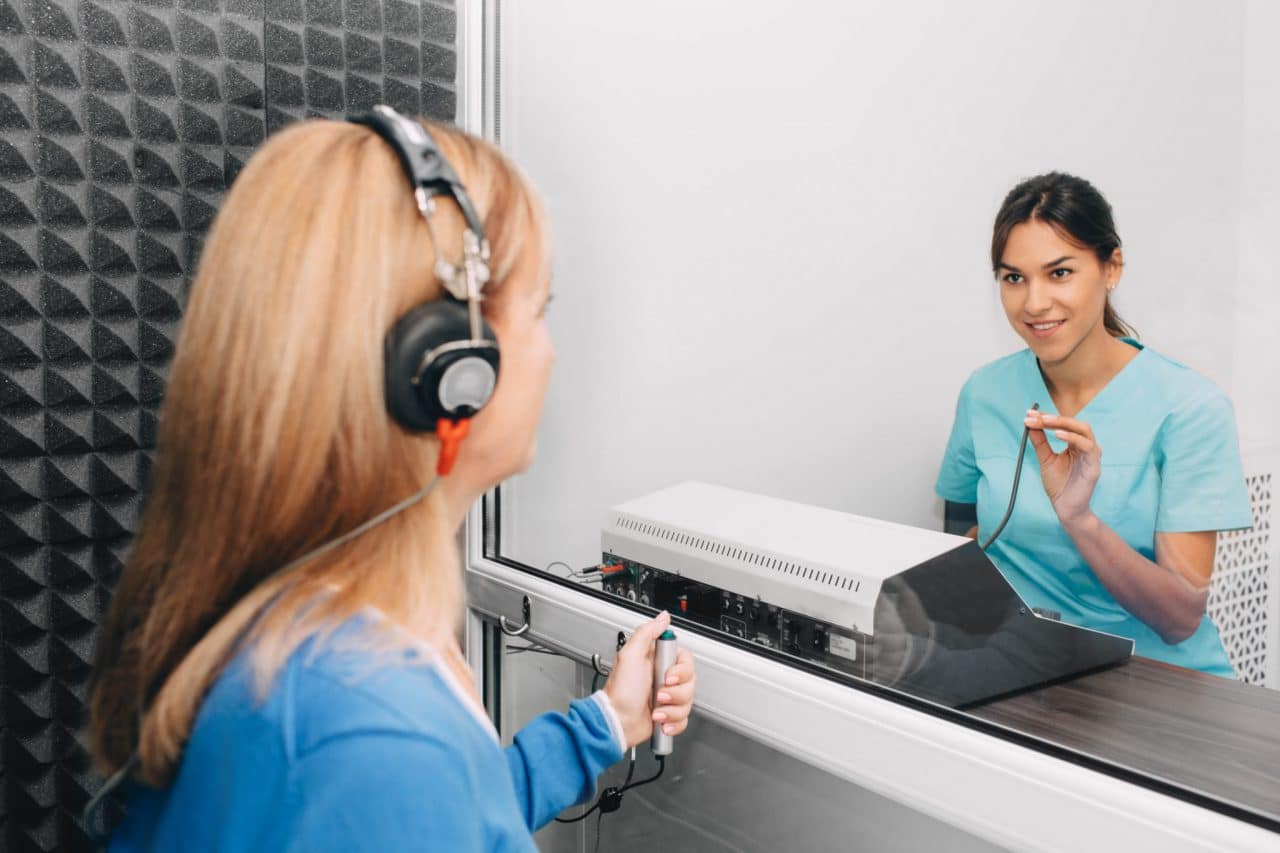Audiology evaluations consist of a series of tests used to determine whether a hearing loss exists and, if so, measure its type, degree and configuration. An audiologist will assess the results of each individual test to develop a treatment plan geared toward your unique hearing loss.

A full hearing evaluation is different from a hearing screening. Hearing screenings are tools to see if a person is showing signs of hearing loss. They aren’t robust enough to diagnose hearing loss and can’t be used to build a treatment plan. For individuals who are curious about their hearing, though, an online hearing screener can be a great way to quickly check for signs of hearing loss.
Who Should Be Given A Hearing Test?
A hearing test (audiogram) can benefit patients of all ages. It can help establish hearing levels and address medical concerns. It is also medically useful for all patients to establish a baseline. Many physicians urge making hearing evaluations a routine part of your overall health care, much like regular vision exams and dental checkups. They are quick, painless and provide immediate results.
What Does Diagnostic Testing Entail?
A comprehensive audiology evaluation consists of a series of individual diagnostic tests that measure different aspects of your hearing. Following a physical examination and a review of your medical history, you will be given any or all of the following tests:
Pure Tone Testing
Pure-tone testing uses a series of beeps to measure the softest sound an individual can hear across a variety of pitches. These beeps are measured using both headphones (air conduction) and through a headband that vibrates (bone conduction). A patient is asked to identify a series of tones by raising a hand or pressing a button. Younger children are tested differently using a play-based approach.
The results are charted on an audiogram, a graph that shows the type, degree and configuration of your hearing loss by comparing pitch (frequency) with loudness (intensity). The pattern recorded will help your audiologist determine your hearing threshold.
A hearing test can differentiate between hearing loss caused by something physical (conductive/mixed hearing loss) or a more standard hearing loss from nerve damage (sensorineural).
Speech Testing
Speech testing has two parts. The first is a speech reception threshold (SRT), which is the softest volume an individual can accurately repeat a word. The next test is a word recognition score (WRS), which measures speech clarity.
Tympanometry
Tympanometry is a pressure test that can help measure any problems on or behind the eardrum. It measures the amount the eardrum moves in response to pressure; the results are recorded on a chart called a tympanogram. This can help detect middle ear fluid, an eardrum perforation, etc.
Call Willamette ENT & Facial Plastic Surgery at (503) 581-1567 for more information or to schedule an appointment.
“Everyone is nice and very efficient.”